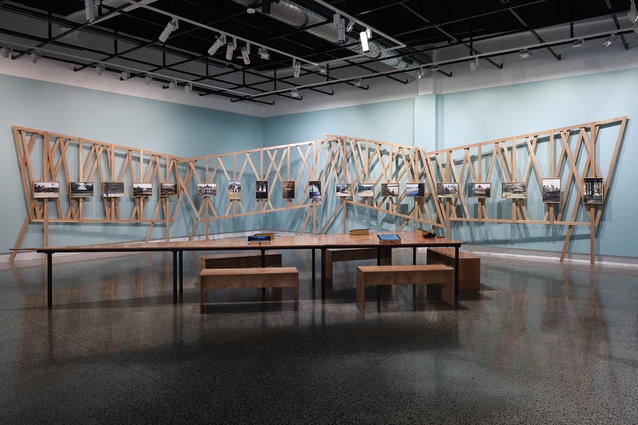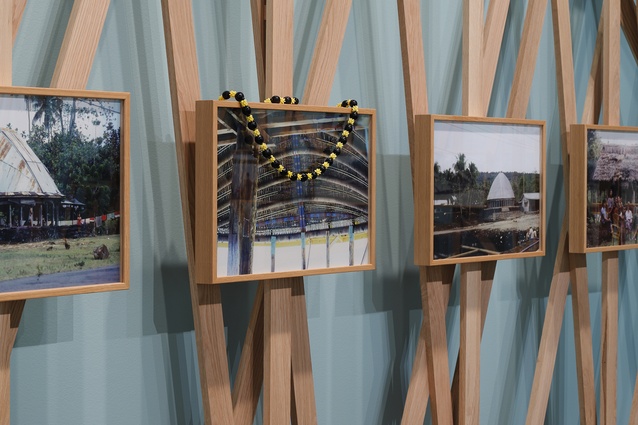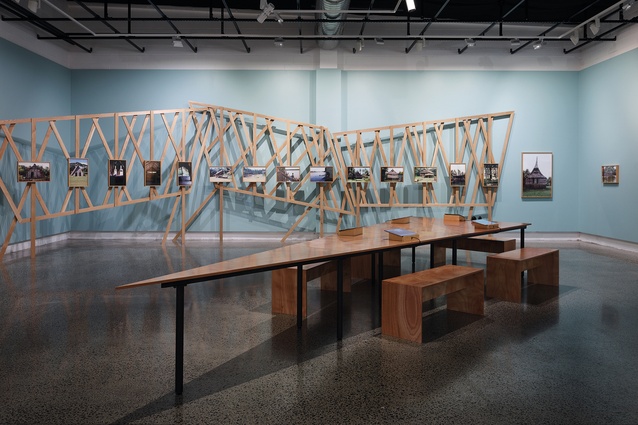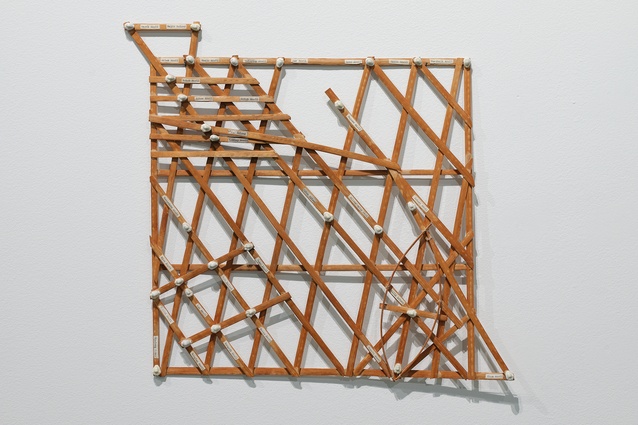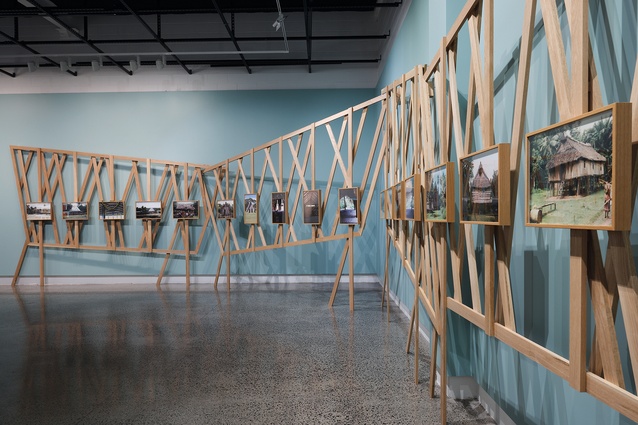Exhibition: Oceanic Architectural Routes: The photographic archive of Mike Austin
Karamia Müller discusses the Mike Austin photography exhibition, designed by Hannah Manning-Scott for Objectspace, curated by Leali’ifano Albert L. Refiti, Auckland 3 December 2022–26 February 2023.
Mike Austin, known for his humility, would shrink from the title ‘Godfather of Pacific Architecture’, even if I use it in moderate jest. But there is truth in the ruse. Parsing the canon of Pacific architecture means, inevitably, encountering the work of Mike Austin. This is impressive; the region is defined by the watery body that flows over one third of the planet.
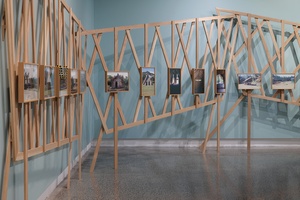
Austin is a practising architect and leading scholar in the field, and his photographs evidence a lifelong architectural photography practice. The displayed images have been selected from his personal archive, which documents his time travelling through Papua New Guinea, Solomon Islands, Fiji, Sāmoa, Tonga, the Cook Islands, Hawai’i and Rapa Nui. The design of the exhibition works to underscore a longer narrative in Austin’s study, research and teaching of Pacific architecture: that deep roots and reflective practices underpin continual transformation of the region’s built realm. In our contemporary moment, this may not sound so radical but travel back 60 years and that would not have been the case. The postmodernism to post-constructivist din would have been a bit loud while Austin was faithfully recording lightness and tension in the Pacific building and its context.1

Or maybe it wasn’t. When I peer closely and try to listen to these images, it is salty water that I hear. One ought to see this exhibition. The catalogue includes built realms that are no longer in existence. For this viewer, an image showing power lines stretching over silvery water and mangroves to the island of Bau in Fiji, with bure in the distance, was especially poignant. Others will find different images, if not this one, will speak to them in the same way, I am sure. It was taken in 1988 and the Fiji coup had just occurred; 1989 would see the Berlin Wall come down. The world was opening to free markets and Austin was noting everything he could about the architecture of the Pacific. It is stilling to participate in this longer view as an audience and, as the exhibition seems to invite, to understand oneself as similarly agentic in telling the story of Pacific architecture.

Exhibition designer Hannah Manning-Scott has done a fine job, adopting a Marshallese navigational chart, also from Austin’s archive, and scaling it to create a frame on which some of the exhibition images are mounted. The structure also distinguishes between the waters of Polynesia and the waters of Melanesia and Micronesia. I quite like what the gesture seems to posit about architectural exhibition-making – that revisiting Pacific marine technologies can play a role in creating contemporary spaces and experiences, not only through surface treatment but in conveying the complexity of the region. It is of the water.
Curator Leali’ifano Albert L. Refiti has somehow done the impossible, saying no to hundreds of Austin’s startling images to create an exhibition that is narrative driven and non-linear without being essentialising. The effort and its worth is evident in a compelling constellation of architectural imagery that entangles tradition with dwelling with change, through the lens of the architectural ethnographic. Curator and conversational partner to the show, Refiti does something else wonderful with the fine threads woven across the show’s parts. He brings the joy of storytelling that has animated research for generations of scholars who have worked with Austin and it is this characteristic that is more than the sum of the parts of research, teaching and practice. If you have seen his blue eyes twinkle at an architectural crit, you will know what I mean. A Californian star architect’s naïve assumptions about staying in a bure are included amongst the exhibition notes and provide one of many joyous detours in the exhibition.

The collaboration is productive; all bestow a sense of la durée on the exhibition. Refiti, an Associate Professor at the AUT School of Art and Design, is an expert in the pre-history of Pacific architecture and the overall sensation is one of a longer cycle of time of which we are all part. Time is not collapsing, it’s twisting. The cycle of life leaves an indelible watermark on this extraordinary collection of architectural pictures. It is appropriate that, as Austin has noted: “Oceanic Houses all have a life and, therefore, a death”.2 The images have an endness to them, amplified by the technology of the time. They are saturated with the hue of time passing – that softening that happens to photos – and around the edges of some are the tell-tale signs of the precarity of memory: small flecks of black. That said, contextualised by Refiti and Austin’s conversations, accessible by a tablet on a central table, and with Manning-Scott’s design, the overall feeling is a sensation best summed up by Austin’s own words: “The hope for the future is for the production of an architecture resulting from the grinding together of land and people in the context of ever-present ocean”.3

